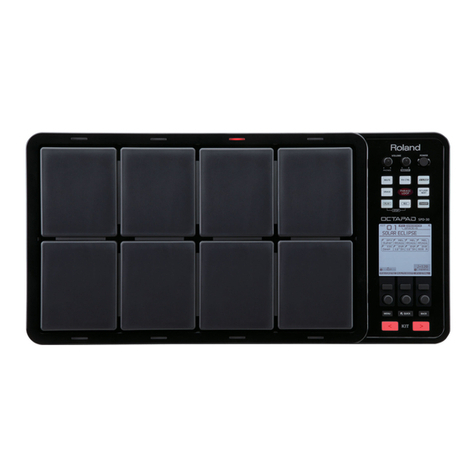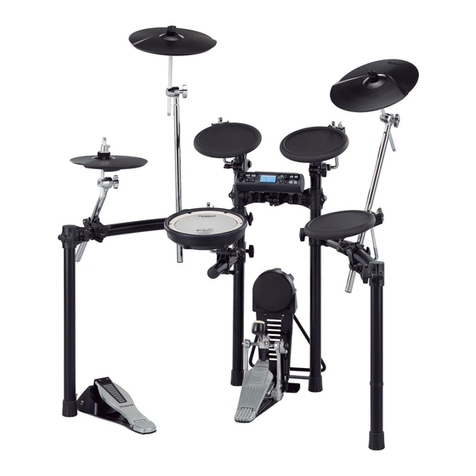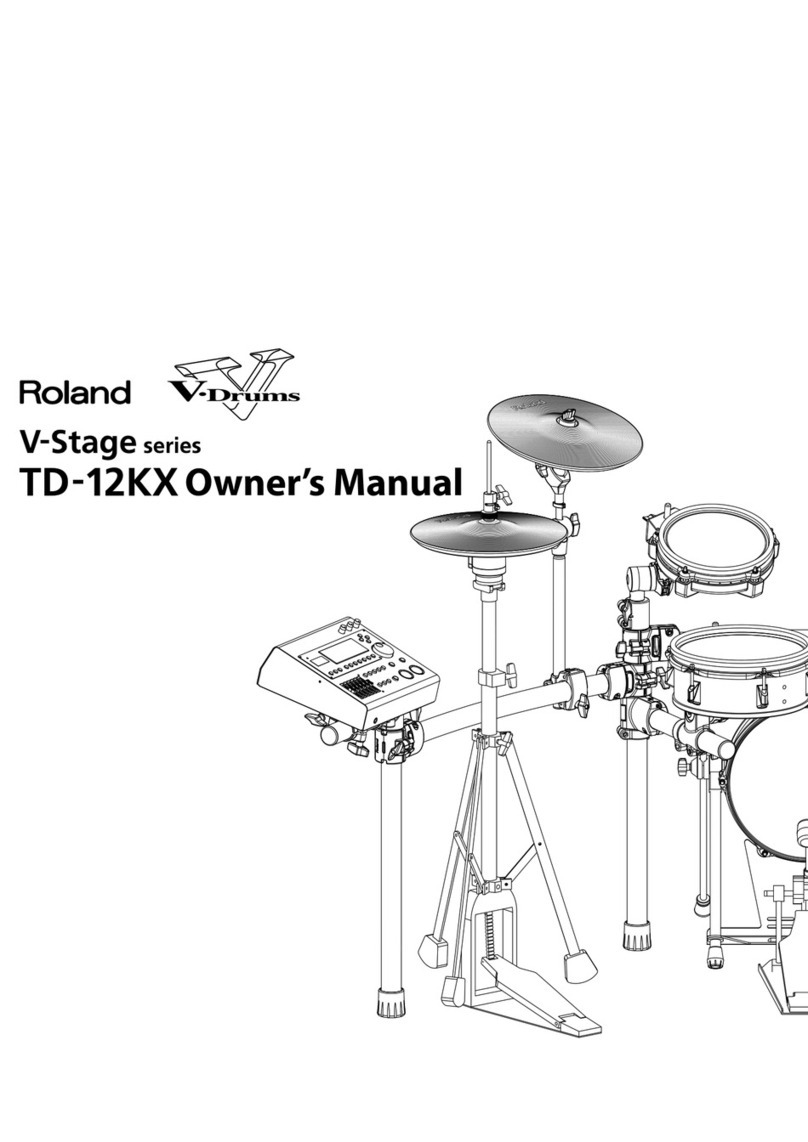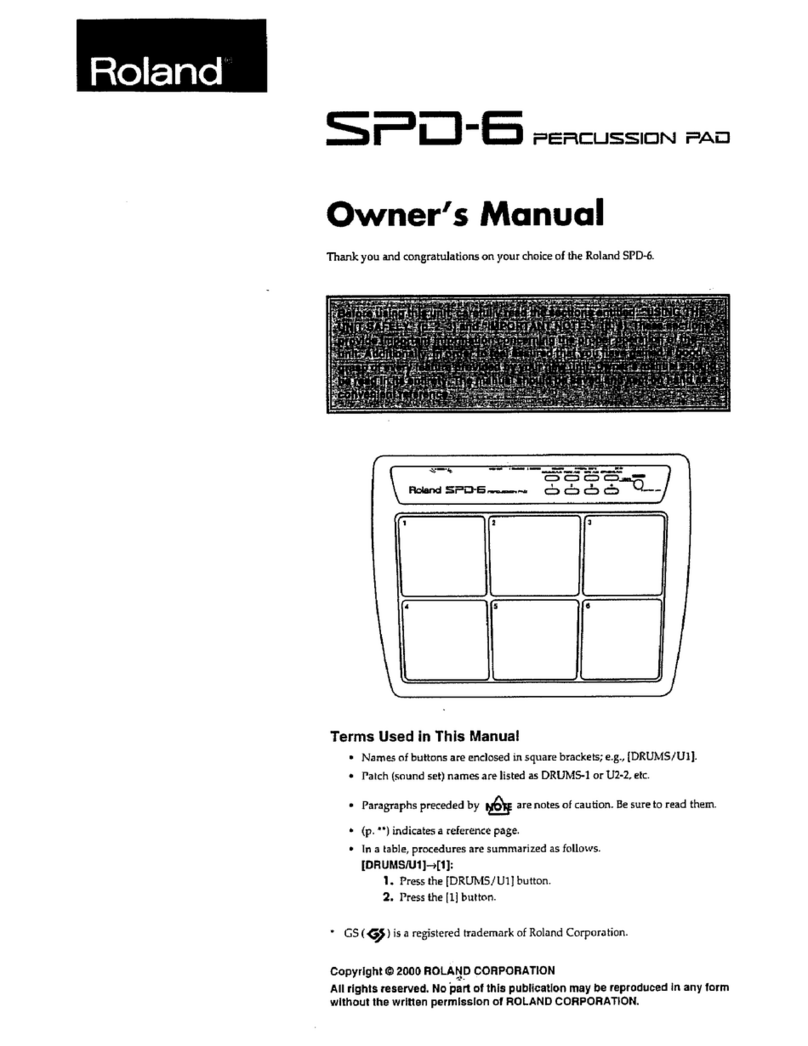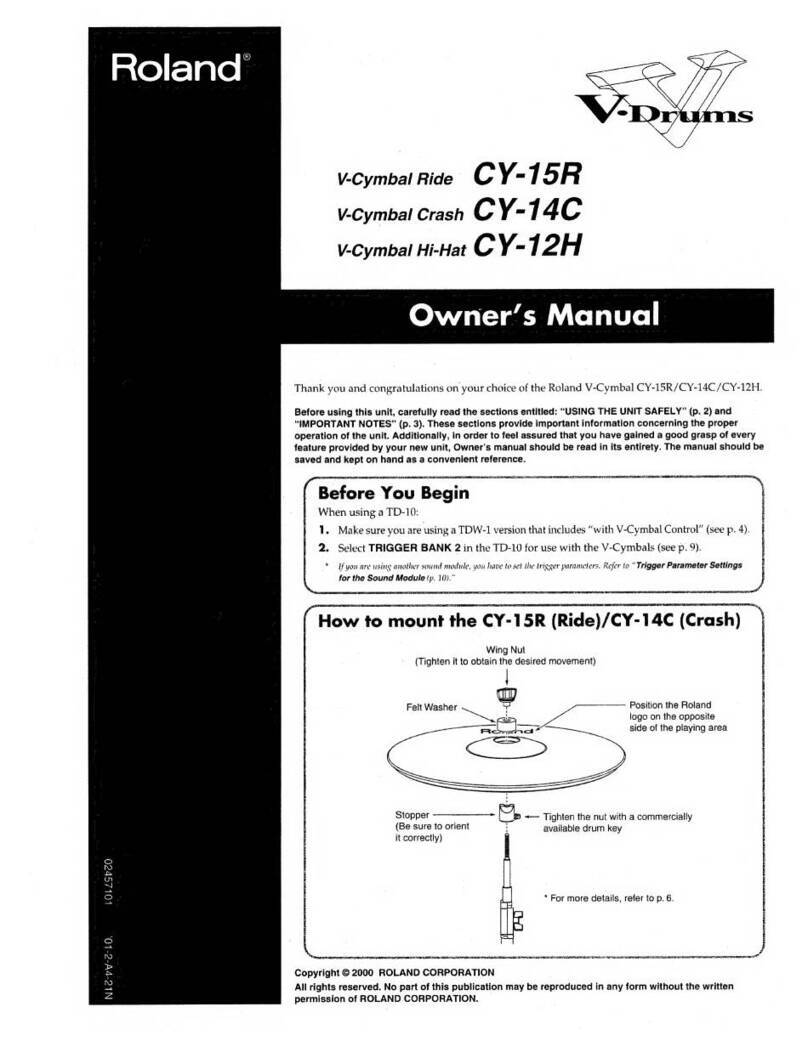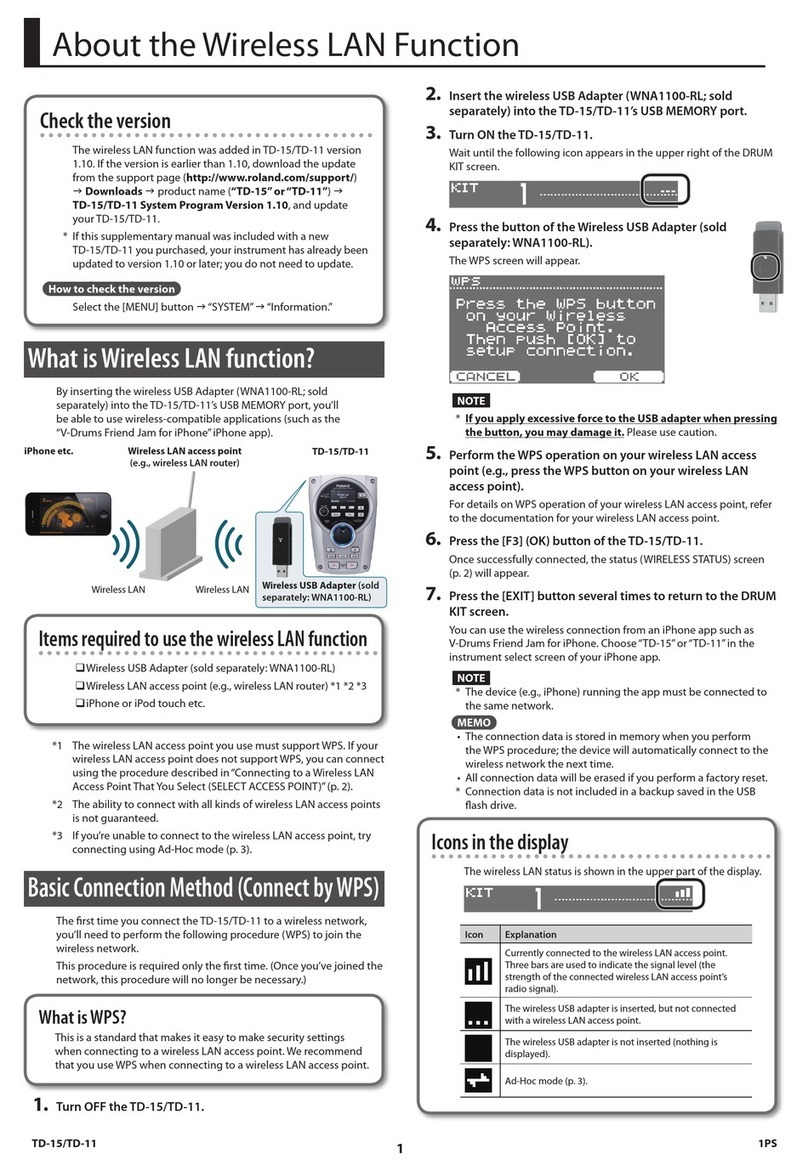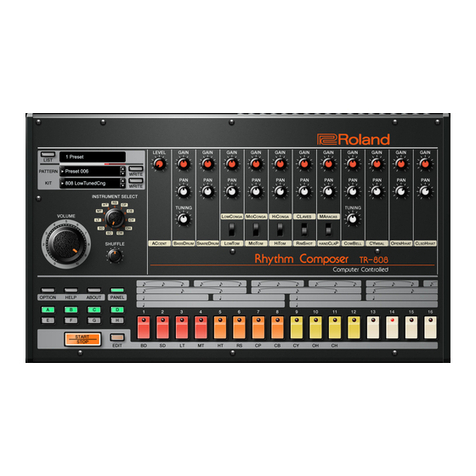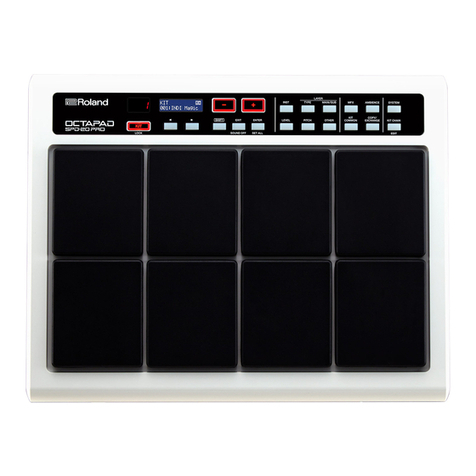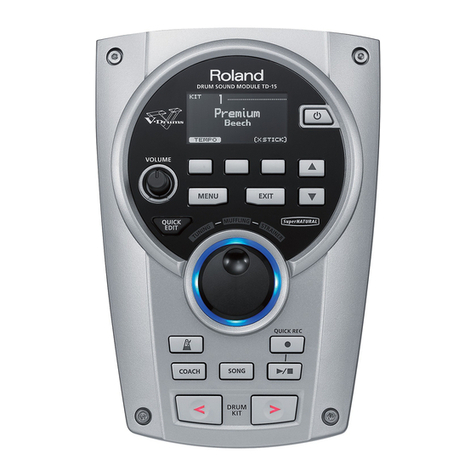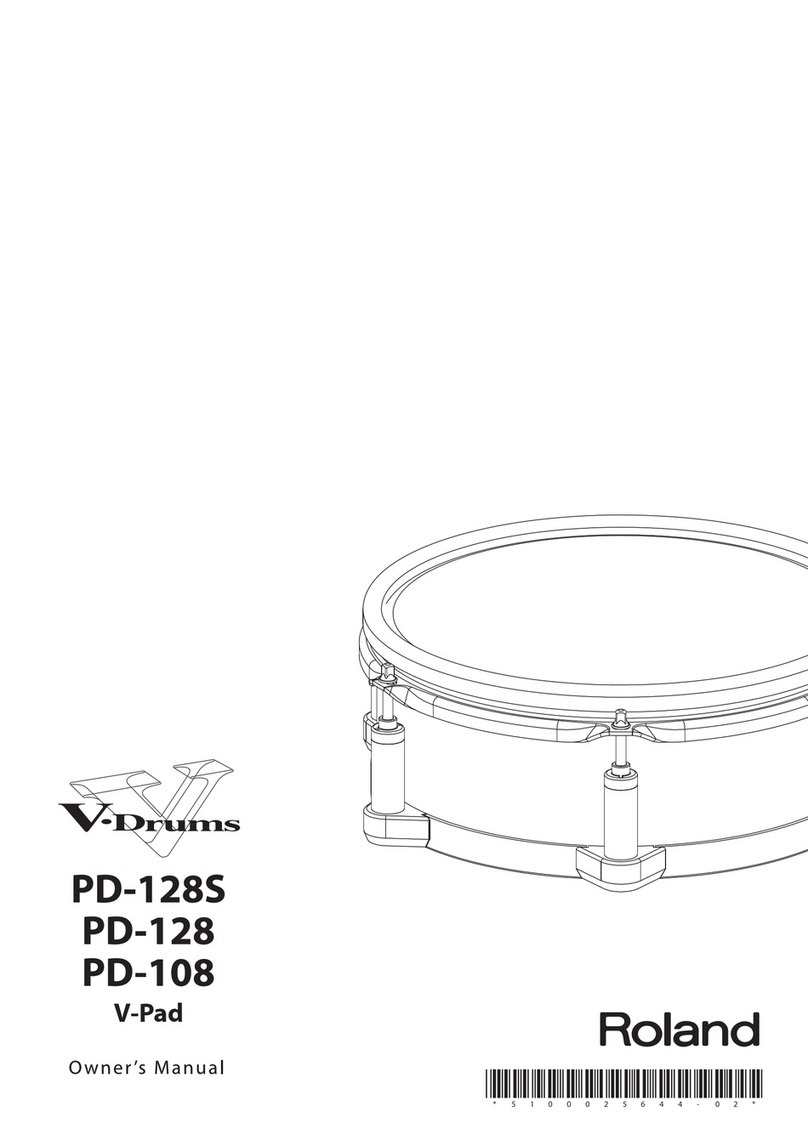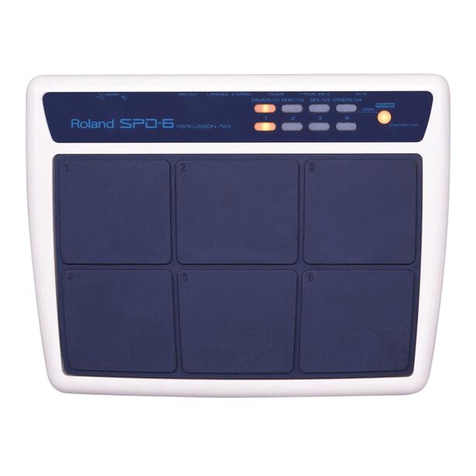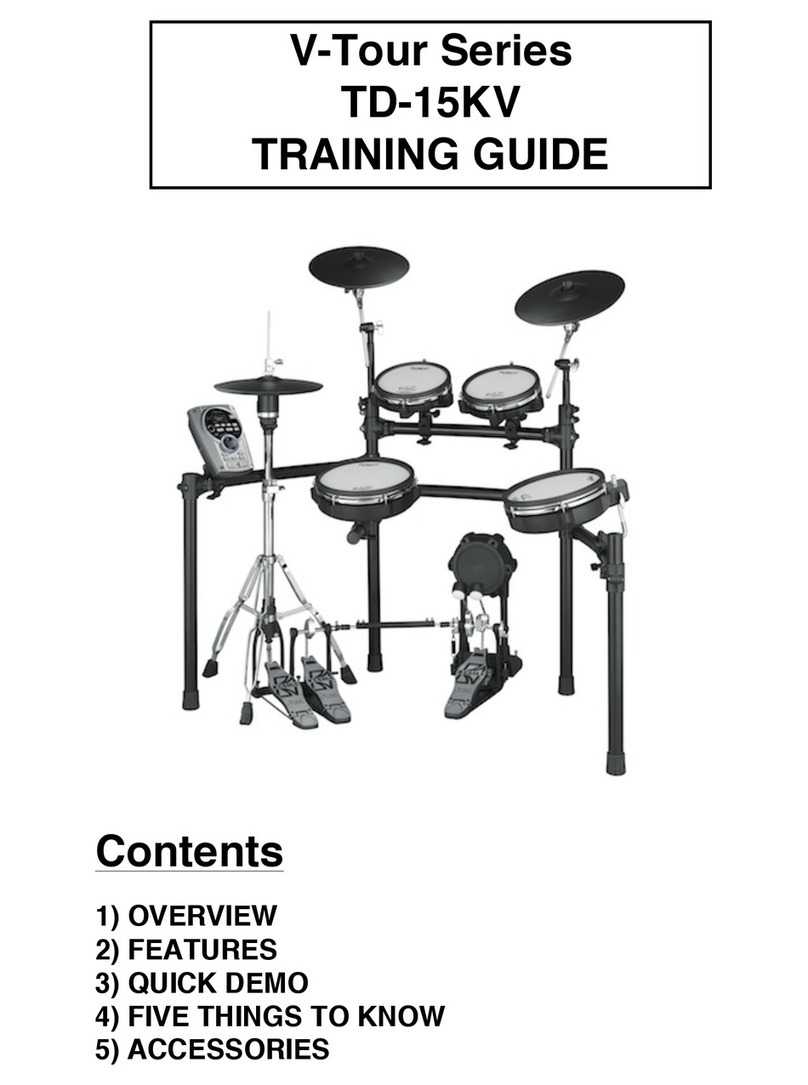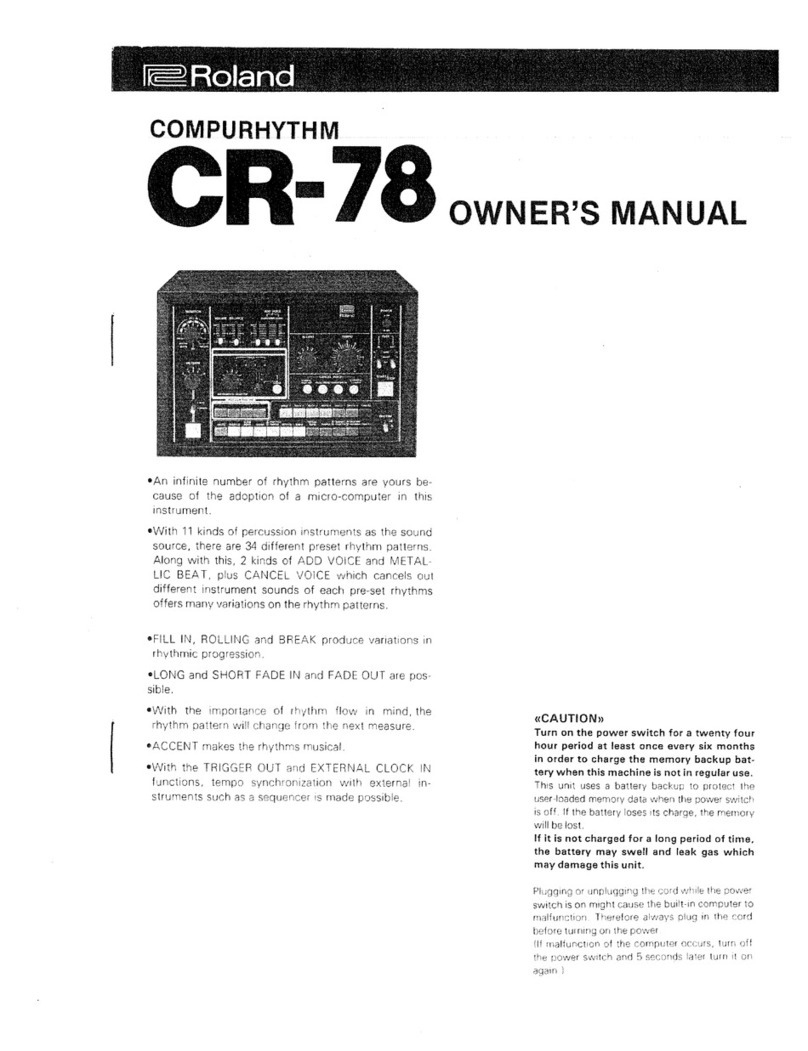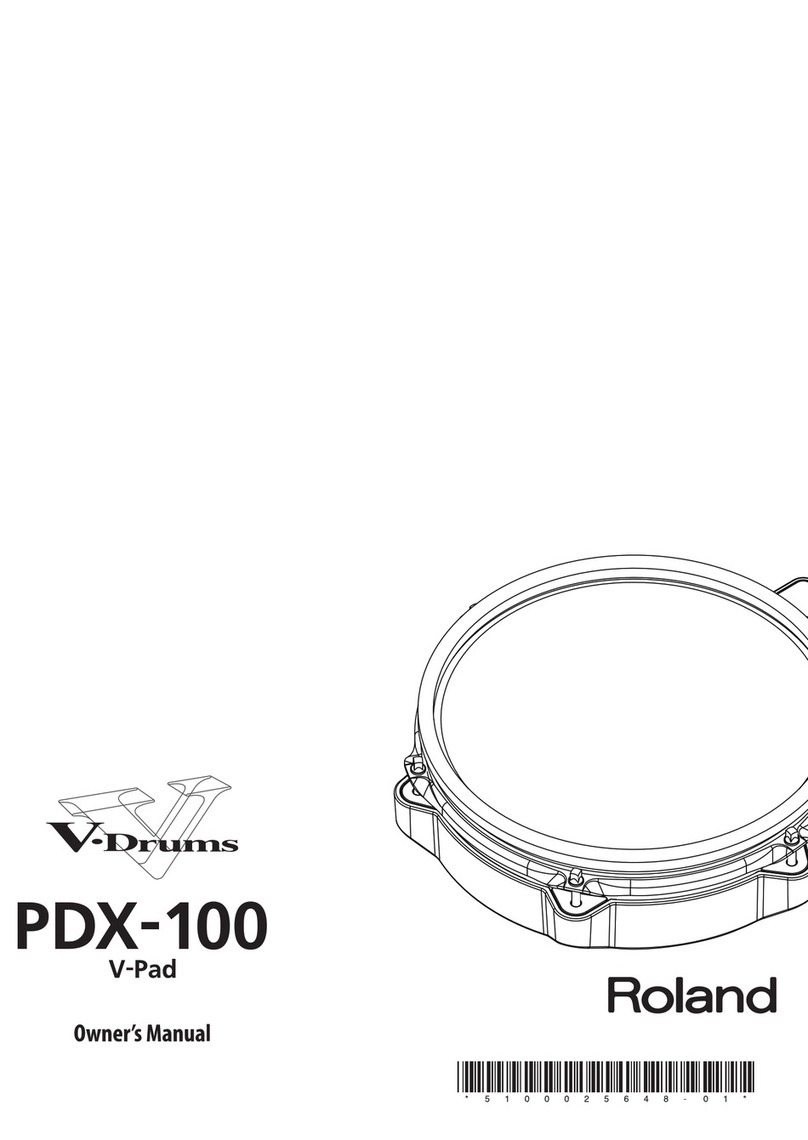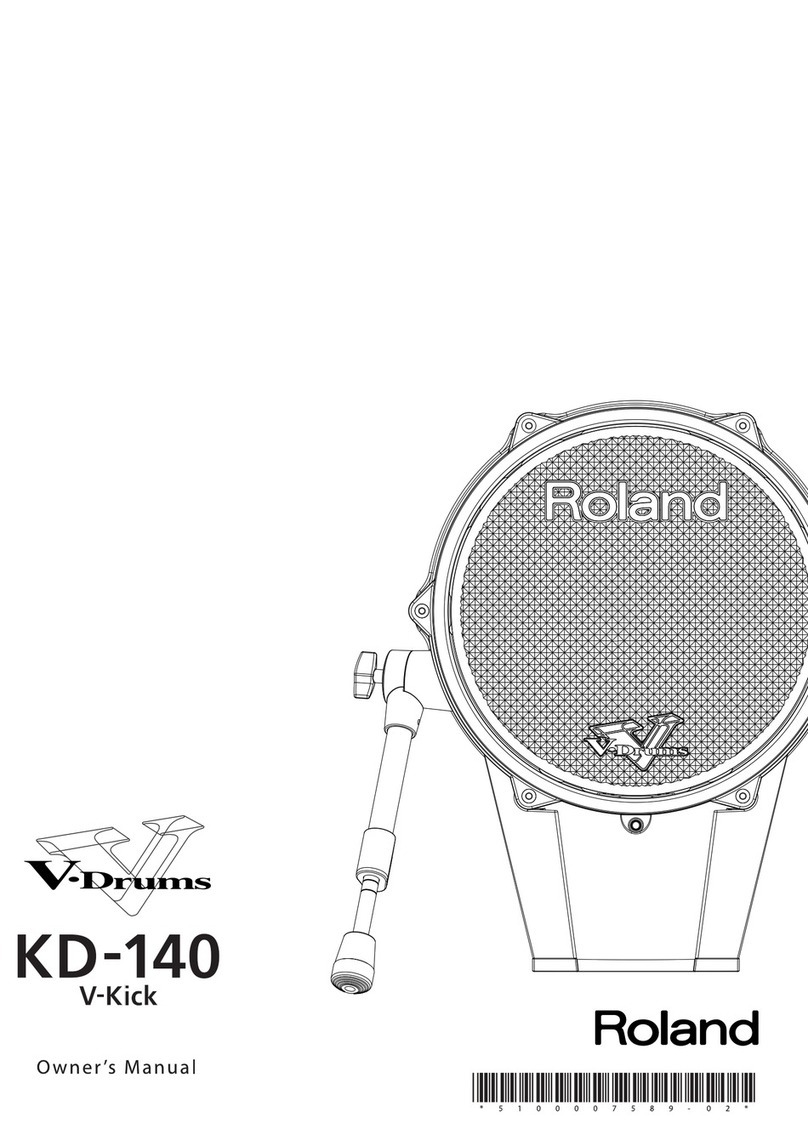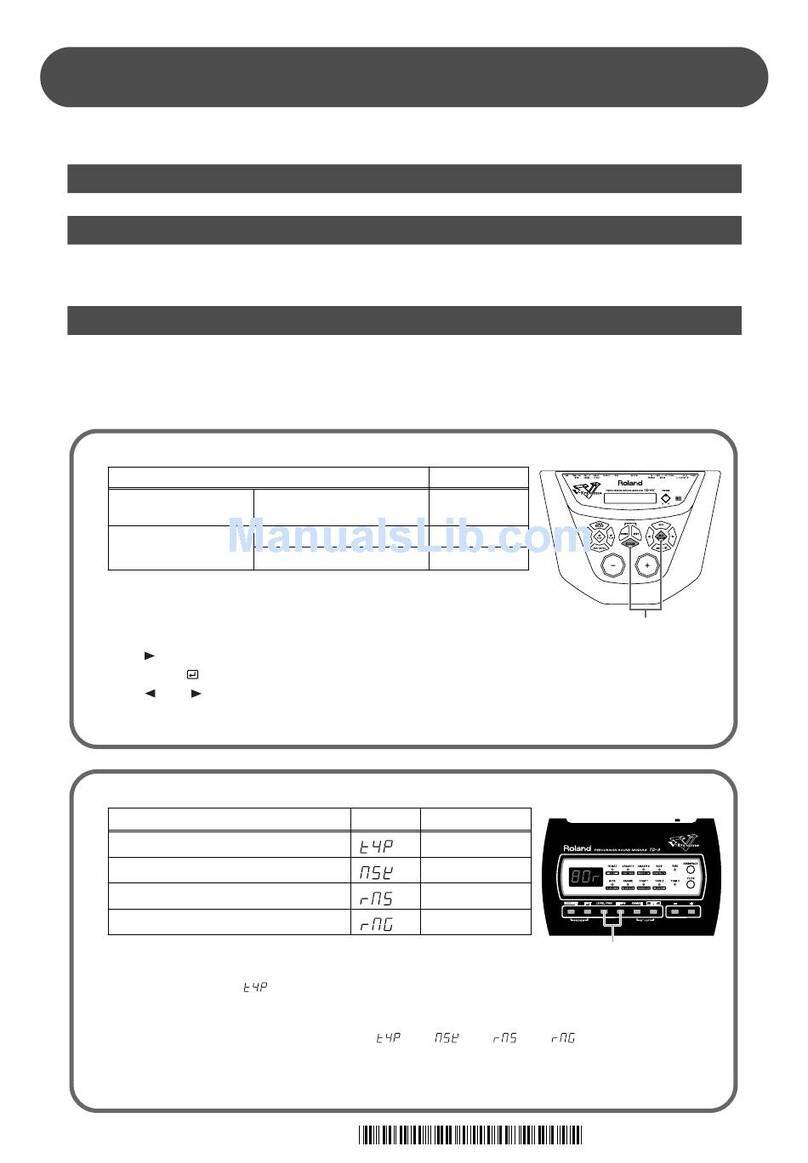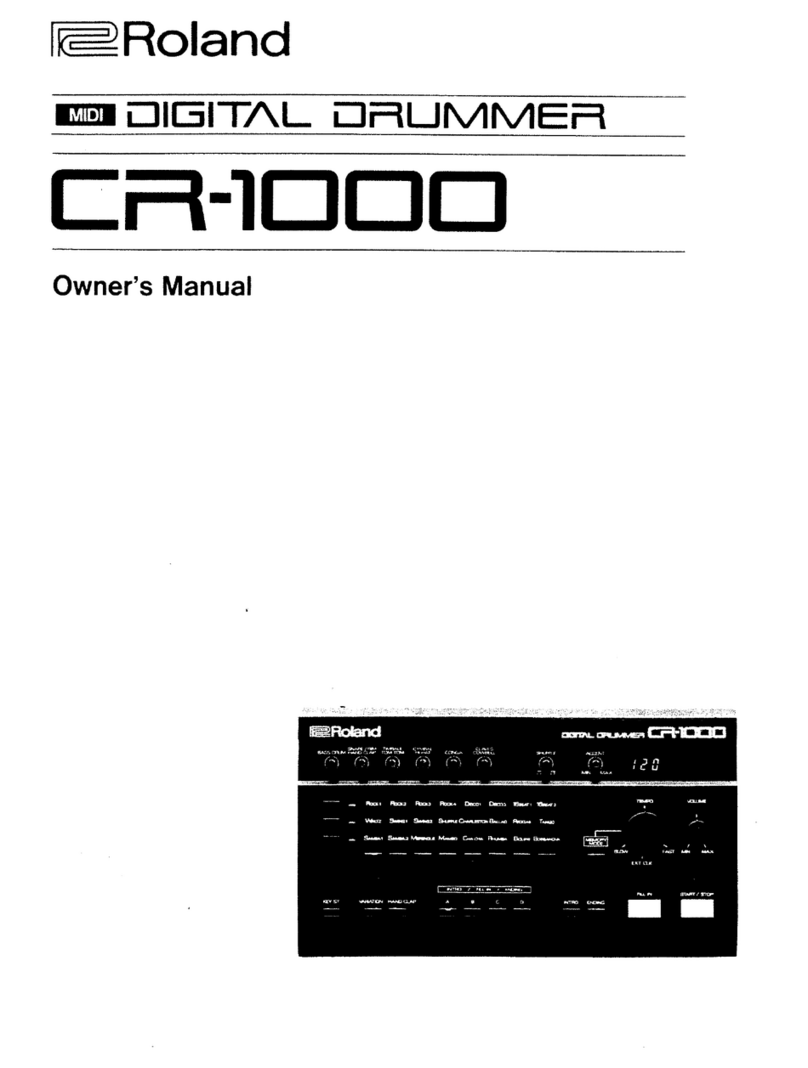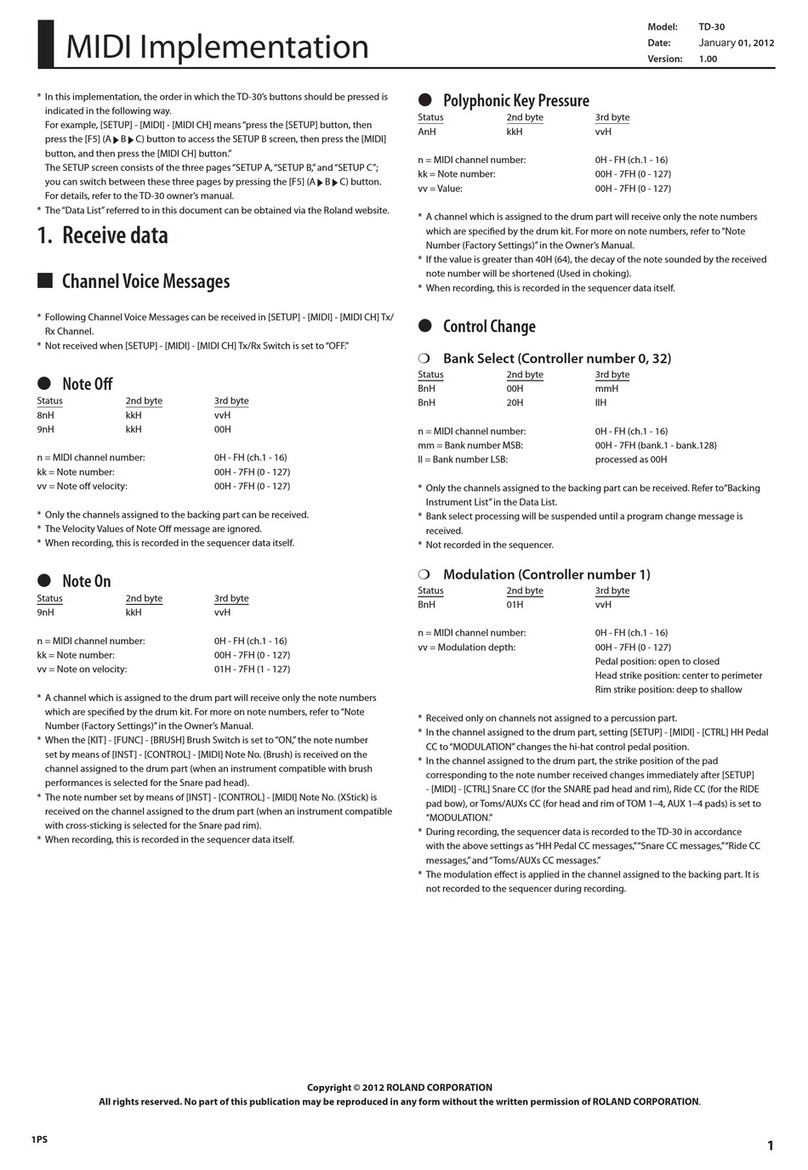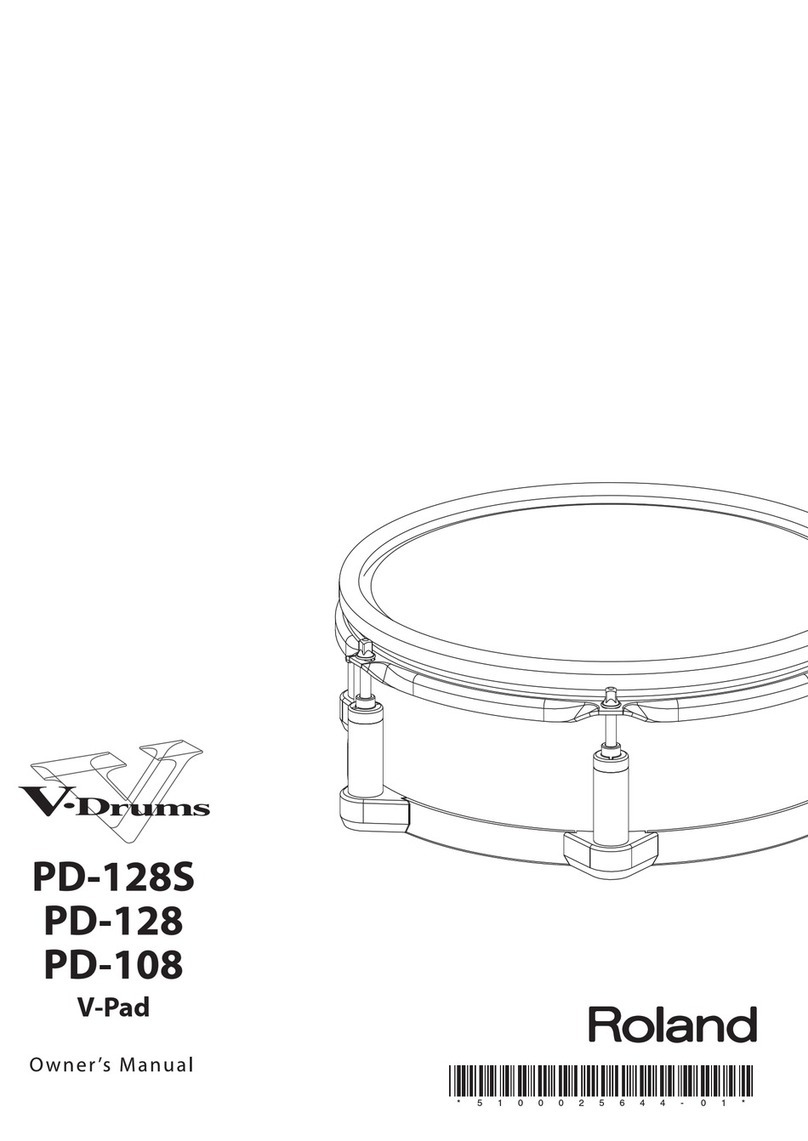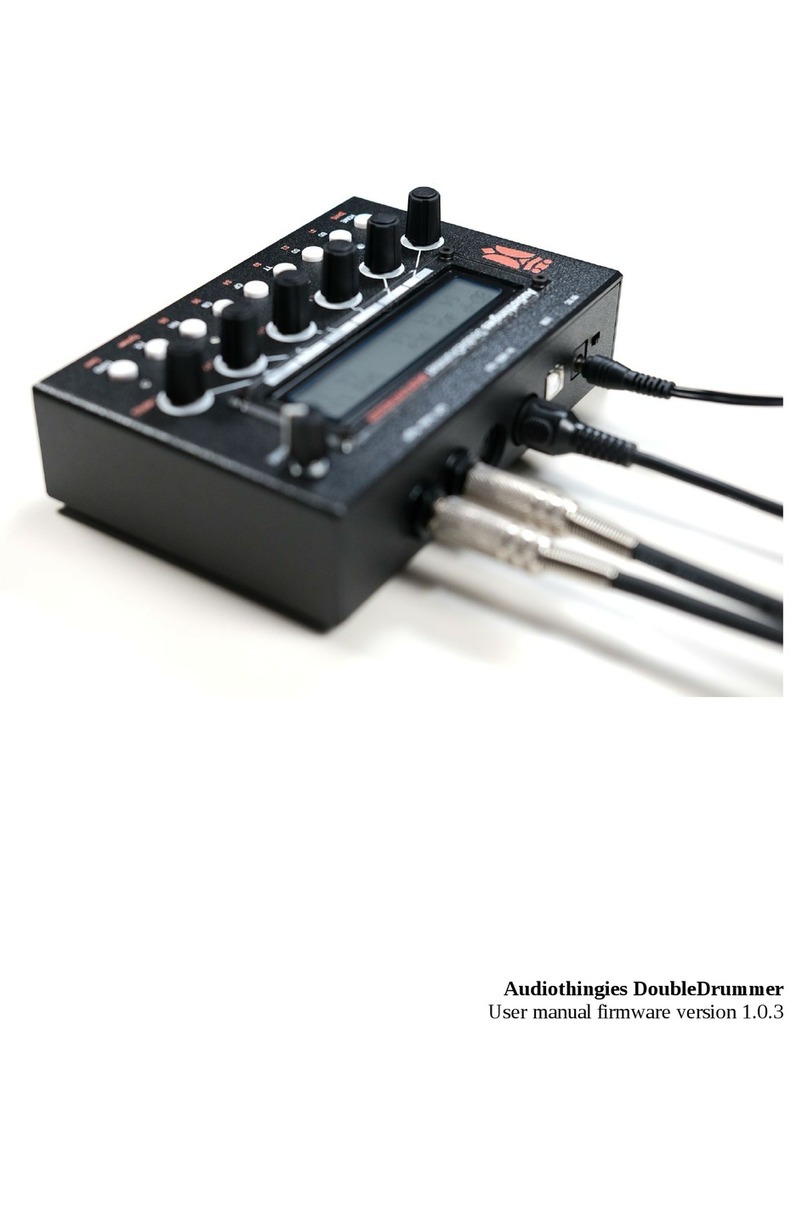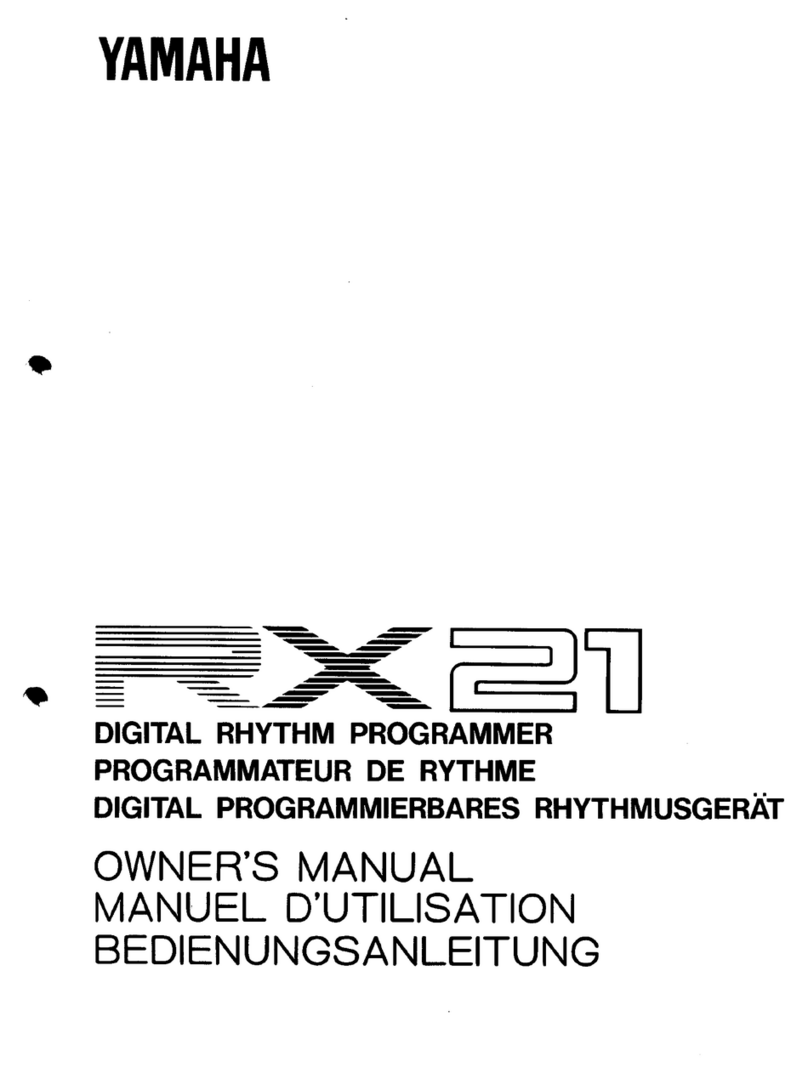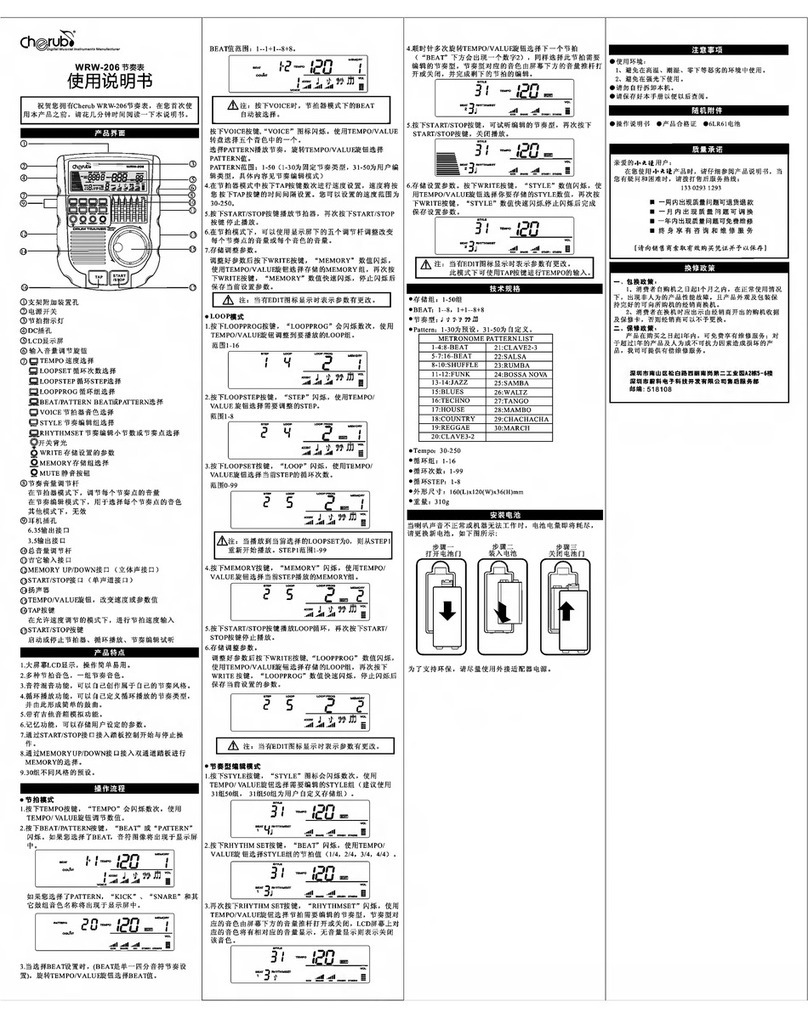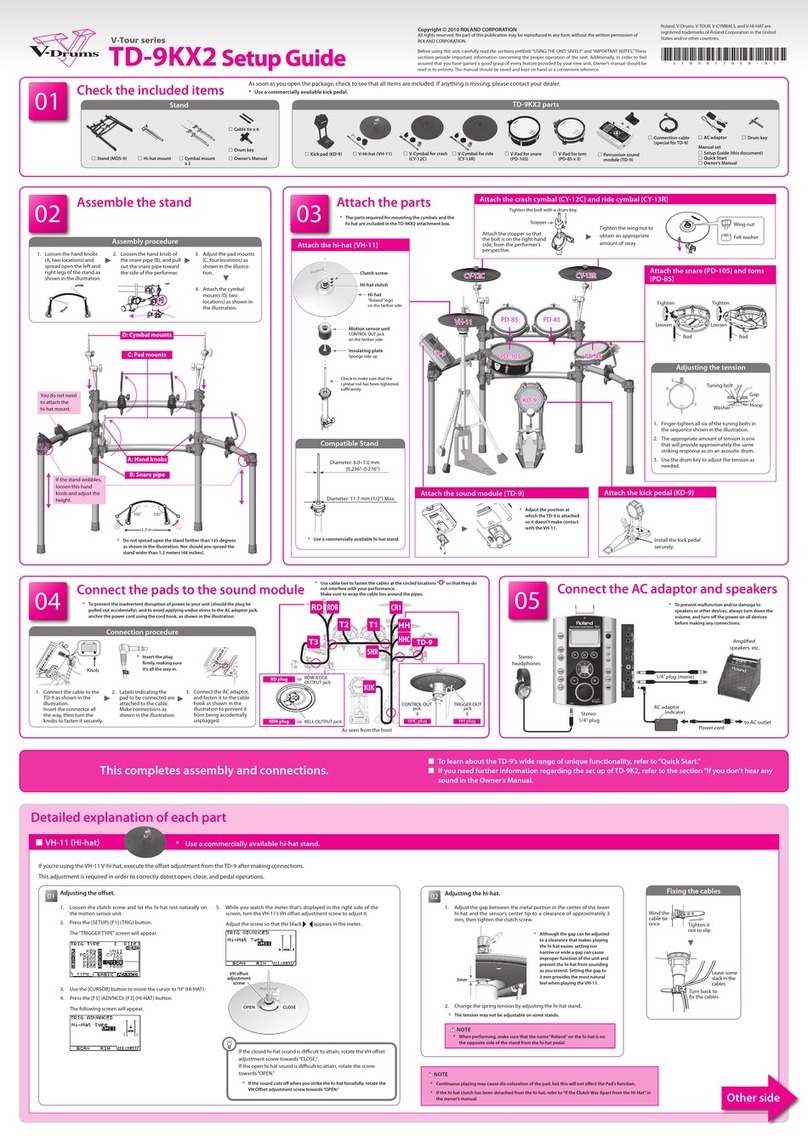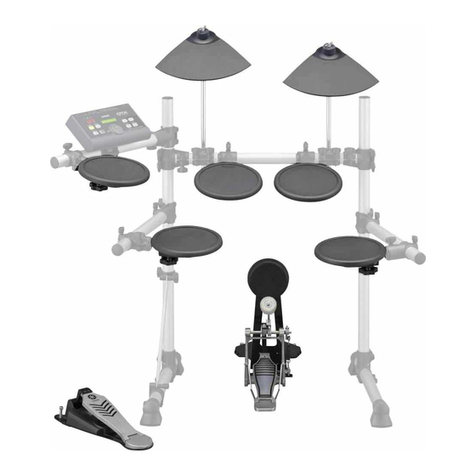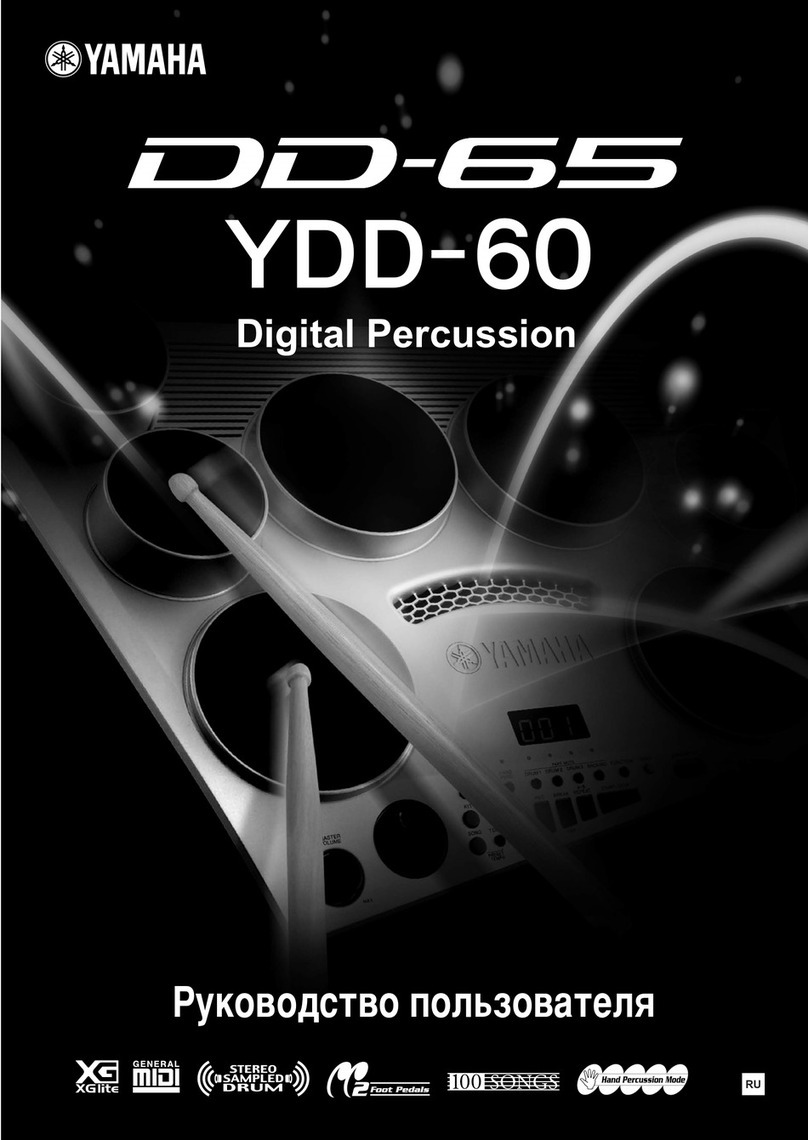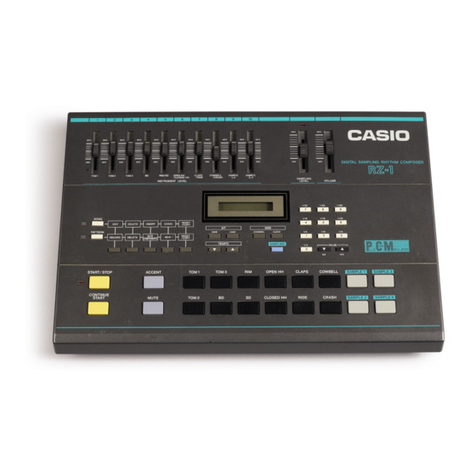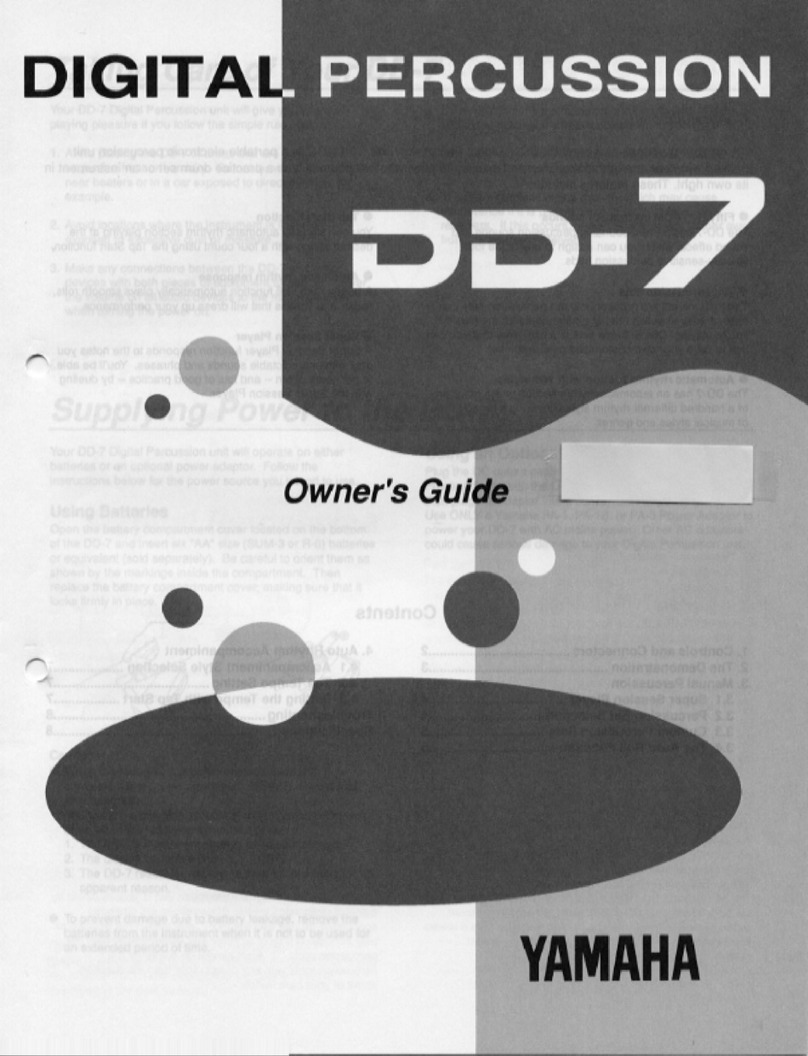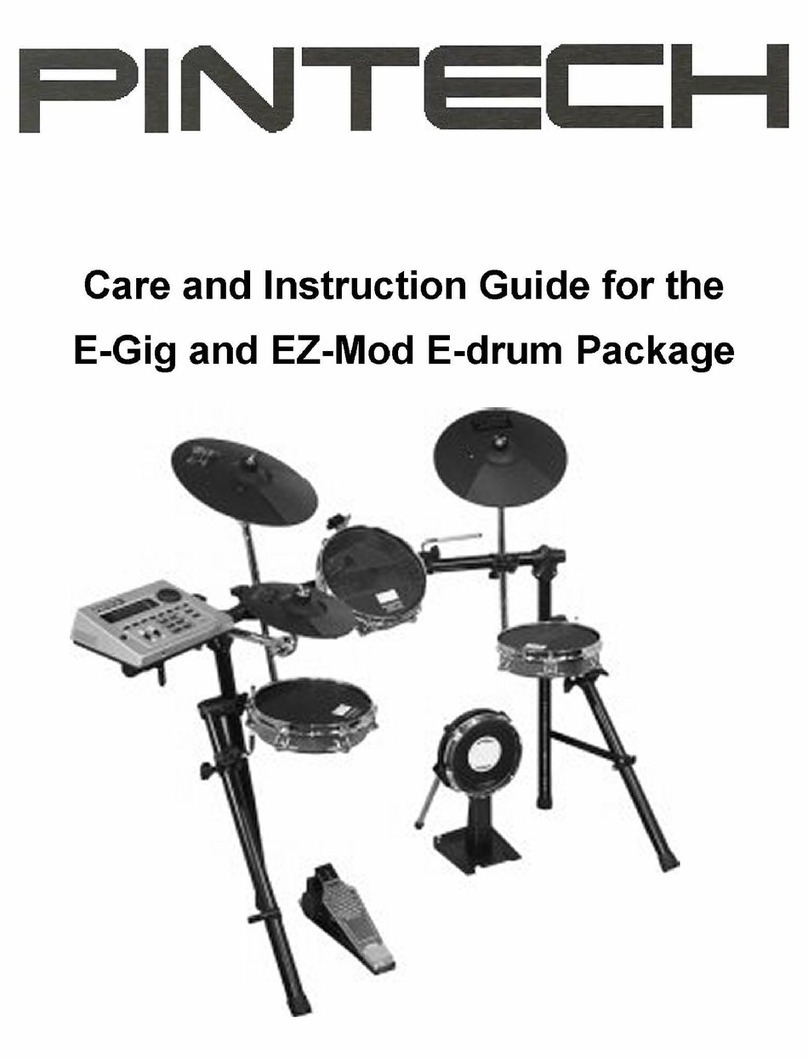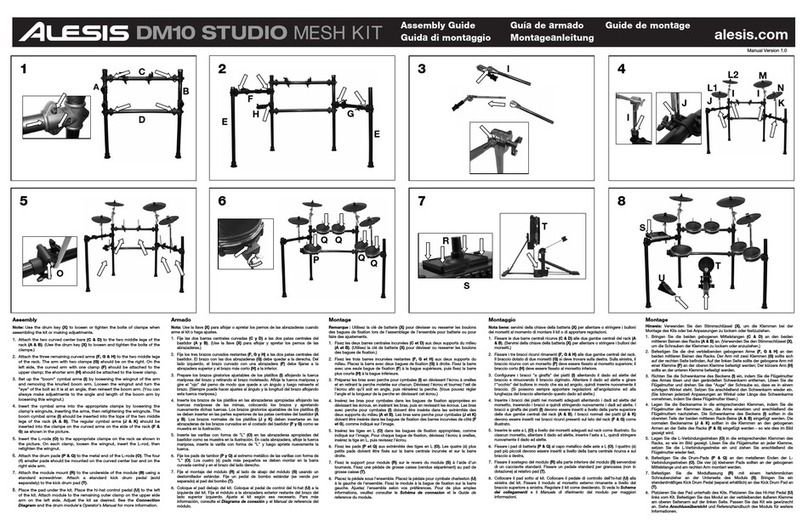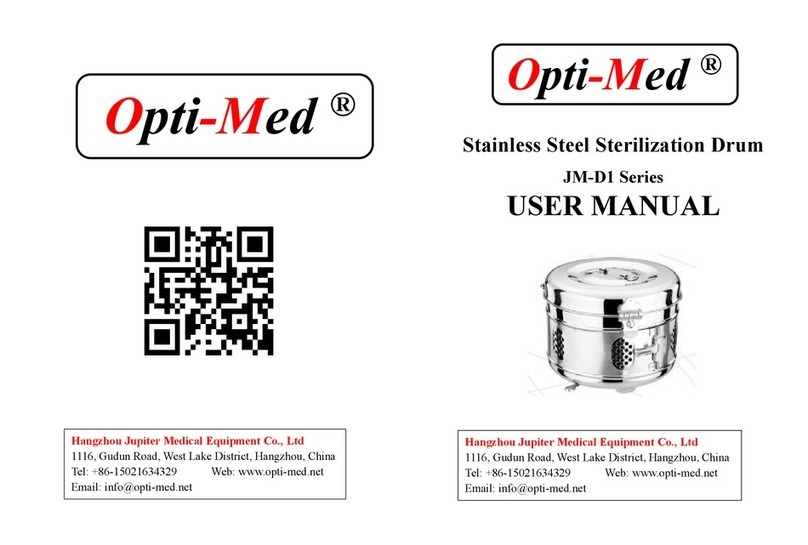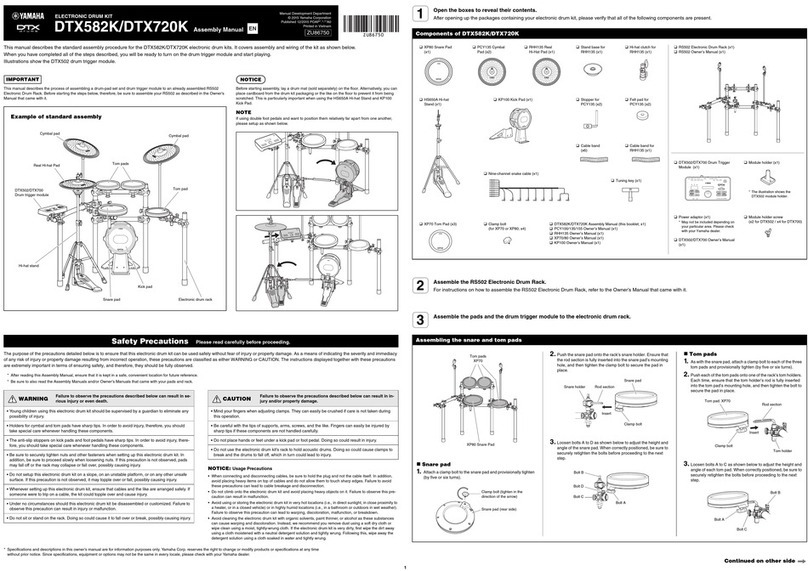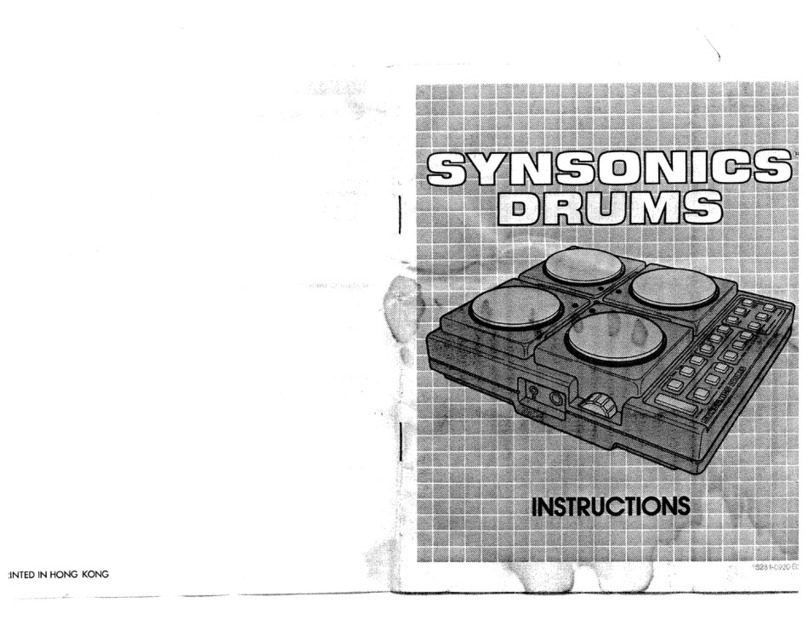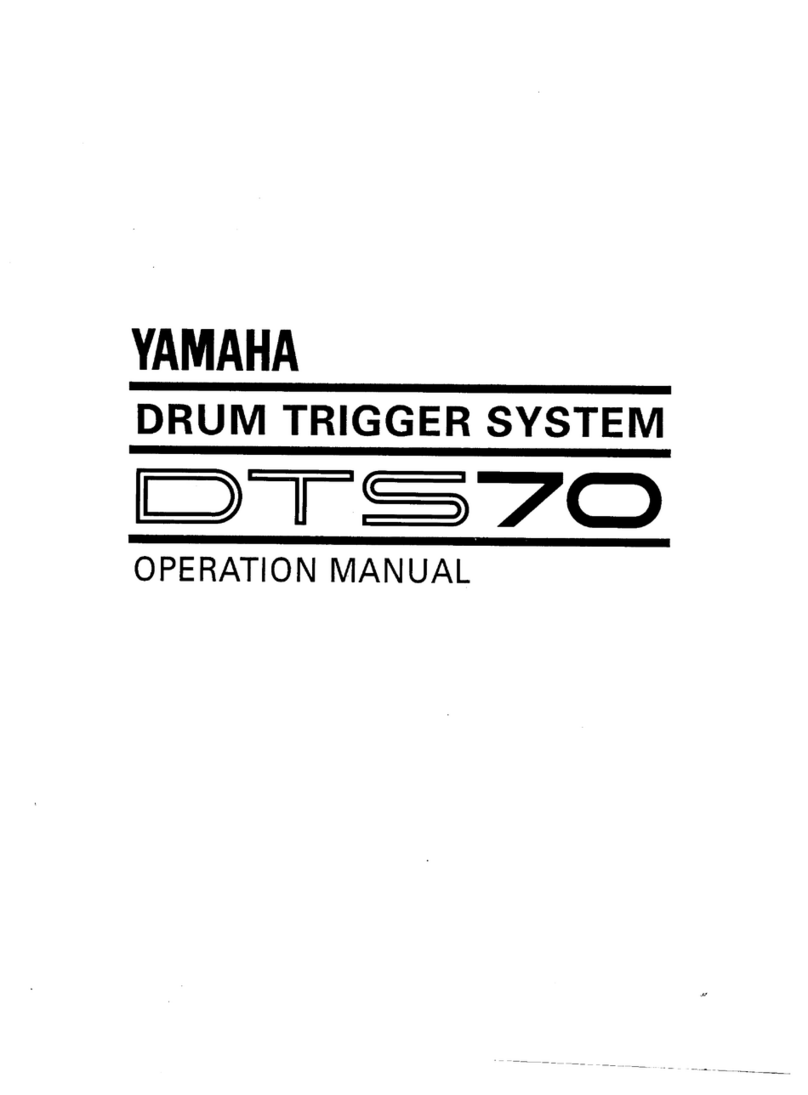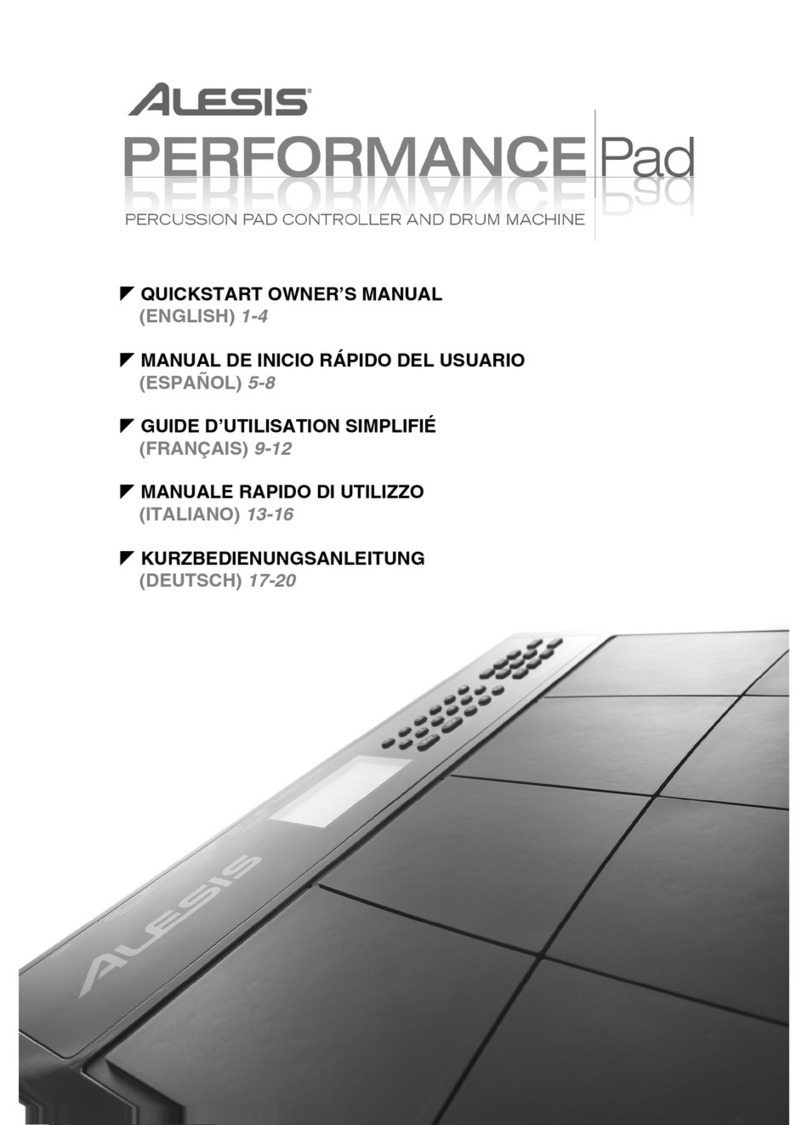
Setting Up
Set up the stand as shown in the illustration.
DBS-10
Adjust the openness
of the legs, and fasten
them.
Knob 5
Adjust the height
of the stand, and
fasten it.
Adjust the height
of the stand, and
fasten it.
Adjust the angle of
the boom arm, and
fasten it. Loosen the knob, and adjust
the position of the boom arm.
Knob 6Adjust the angle of the
cymbal mount, and fasten it.
Boom
Cymbal mount
Cymbal nut
Rotation stopper (only for V-Cymbal)
Felt
Knob 3
Knob 4
Knob 2
Knob 1
DCS-10
Cymbal nut
Rotation stopper (only for V-Cymbal)
Felt
Cymbal mount
Adjust the openness of the
legs, and fasten them.
Adjust the height of the
stand, and fasten it.
Adjust the height
of the stand, and
fasten it.
Adjust the angle of
the boom arm, and
fasten it. Loosen the knob, and adjust the
position of the boom arm.
Adjust the height of the
tom holder, and fasten it.
Adjust the angle of the cymbal
mount, and fasten it.
Adjust the angle of the tom
attached to the tom holder, and
fasten it.
Boom
Tom holder
Knob 6
Knob 8
Knob 7
Knob 2
Knob 1
Knob 4
Knob 5
Knob 3
IMPORTANT NOTESUSING THE UNIT SAFELY
Before using this unit, carefully read “USING THE UNIT SAFELY” and “IMPORTANT NOTES.” After reading, keep the
document(s) where it will be available for immediate reference.
© 2020 Roland Corporation
English
Owner’s Manual
Caution when setting up
5The tips of the cymbal mount and tom holder are sharp. Handle them with
care.
5When setting up or storing the stand, be careful not to pinch the ngers you
use to handle the stand.
5When setting up, ensure that the tripod of the stand is suciently open. If the
tripod is insuciently open, the appropriate degree of stability might not be
obtained.
5If you are using the boom arm in a signicantly extended position, stability
will improve if the cymbal is directly above one of the tripod legs.
5Likewise, when attaching the tom to the tom holder, stability will improve if
the tom is directly above one of the tripod legs.
5When you loosen a knob to adjust the height or angle of a tom or cymbal, the
pipe or pad might drop and pinch your ngers. Use one hand to support the
tom or pipe while you slowly loosen the knob.
5To prevent the stand from tipping over or falling, tighten the knobs until
there is no looseness. When tightening knob 5or knob 6, ensure that the
gears that maintain the angle are rmly meshed.
Main Specications
Roland DBS-10: Drum Boom Stand
Weight 4.4 kg / 9 lbs 12 oz
Accessories Cable ties, Owner’s Manual
Roland DCS-10: Drum Combination Stand
Weight 5.2 kg / 11 lbs 8 oz
Accessories Cable ties, Owner’s Manual
* This document explains the specications of the product at the time that the document was
issued. For the latest information, refer to the Roland website.
WARNING
Do not disassemble or modify by yourself
Do not carry out anything unless you are
instructed to do so in the owner’s manual.
Otherwise, you risk causing malfunction.
Do not repair or replace parts by yourself
Be sure to contact your dealer, a Roland
service center, or an ocial Roland dealer.
For a list of Roland service centers and
ocial Roland dealers, refer to the Roland
website.
Do not use or store in the following types of locations
• Subject to temperature extremes (e.g.,
direct sunlight in an enclosed vehicle,
near a heating duct, on top of heat-
generating equipment); or are
• Damp (e.g., baths, washrooms, on wet
oors); or are
• Exposed to steam or smoke; or are
• Subject to salt exposure; or are
• Exposed to rain; or are
• Dusty or sandy; or are
• Subject to high levels of vibration and shakiness;
or are
• Placed in a poorly ventilated location.
Do not place in an unstable location
Otherwise, you risk injury as the result of
the unit toppling over or dropping down.
Be cautious to protect children from injury
It is dangerous to carelessly approach a
drum set. The drum set and the stands
are heavy, and use many metal parts that
have sharp protrusions. A person who
approaches carelessly might accidentally bump,
catch, or trip themselves.
Additionally, if the drum set or stand falls over, it
might scratch musical instruments or furniture. Take
particular care not to allow children to play near a
drum set.
Do not drop or subject to strong impact
Otherwise, you risk causing damage or
malfunction.
Tighten screws rmly
To prevent the stand from tipping or
falling down during playback, make sure
that all screws are rmly tightened. When
adjusting the angle of a component
equipped with a gear, such as a cymbal mount,
make sure that the gears are correctly engaged
when you tighten them.
If you forcibly tighten a screw when its gears are not
meshed, vibration during performance might cause
the cymbal or other item to fall.
Insert pipes securely before fastening them
It is dangerous to fasten a pipe that is
nearly pulled out of the stand. Verify that
the pipe is securely inserted into the pipe
holder, and then turn the knob to fasten it.
CAUTION
Use only stand manufactured by Roland
This stand for use only with specic Roland
musical instruments. See apparatus
instructions. Use with other models is
capable of resulting in instability causing
possible injury.
Evaluate safety issues before using stands
Even if you observe the precautions listed
in this owner’s manual, it is possible for
the stand to fall over depending on the
conditions of use. Check the entire setup
for safety before use.
Route all power cords and cables in such a way as to
prevent them from getting entangled
Injury could result if someone were to
trip on a cable and cause the unit to fall
or topple.
Disconnect all cords/cables before moving the unit
Damage or malfunction may result if you
fail to disconnect all cables before moving
the unit.
Take care so as not to get ngers pinched
When handling the following moving
parts, take care so as not to get ngers,
toes, etc., pinched. Whenever a child uses
the unit, an adult should be on hand to
provide supervision and guidance.
• Legs
• Knobs
• Tom holders
Keep small items out of the reach of children
To prevent accidental ingestion of the parts
listed below, always keep them out of the
reach of small children.
• Included Parts
Cable ties
• Removable Parts
Screws, washers, nuts, felts, springs, knobs,
cymbal nuts, rotation stoppers
Used for instructions intended to alert the
user to the risk of injury or material
damage should the unit be used
improperly.
* Material damage refers to damage or
other adverse effects caused with
respect to the home and all its
furnishings, as well to domestic animals
or pets.
Used for instructions intended to alert the
user to the risk of death or severe injury
should the unit be used improperly.
The symbol alerts the user to things that must be
carried out.The specific thing that must be done is
indicated by the design contained within the circle.In the
case of the symbol at left, it means that the power-cord
plug must be unplugged from the outlet.
The symbol alerts the user to important instructions or
warnings.The specific meaning of the symbol is
determined by the design contained within the triangle.In
the case of the symbol at left, it is used for general
cautions, warnings, or alerts to danger.
The symbol alerts the user to items that must never be
carried out (are forbidden).The specific thing that must
not be done is indicated by the design contained within
the circle. In the case of the symbol at left, it means that
the unit must never be disassembled.
About WARNING and CAUTION Notices About the Symbols
ALWAYS OBSERVE THE FOLLOWING
Placement
• Depending on the material and temperature
of the surface on which you place the unit, its
rubber feet may discolor or mar the surface.
Maintenance
• Never use benzine, thinners, alcohol or
solvents of any kind, to avoid the possibility of
discoloration and/or deformation.
• If cleaning is necessary, wipe with a soft dry
cloth.
Intellectual Property Right
• Roland is either a registered trademark or a
trademark of Roland Corporation in the United
States and/or other countries.
• Company names and product names appearing
in this document are registered trademarks or
trademarks of their respective owners.
When you need repair service, access this URL and nd your nearest Roland Service Center or authorized Roland distributor in your
country.
http://roland.cm/service
Roland Service Centers and Distributors
Roland Service Centers and Distributors

